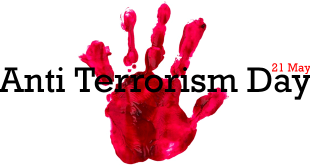International Day for the Elimination of Violence against Women: Know in detail the importance of the day 25th November, its theme, history, and how it is celebrated.
International Day for the Elimination of Violence against Women: Date
- 2024: 25 November, 2024 [Monday]
- 2025: 25 November, 2025 [Tuesday]
- 2026: 25 November, 2026 [Wednesday]
Data has been released by the WHO and partners from the largest-ever study of the prevalence of violence against women. It shows that 1 in 3 women across their lifetime faces physical or sexual violence by an intimate partner or sexual violence from a non-partner. COVID-19 lockdown and disruption to some significant services further increased women’s exposure to violence.
According to the UN, 137 women are killed by a member of their family every day. Less than 40% of the women who experience violence seek help of any sort.
International Day for the Elimination of Violence against Women: Theme
- 2024: Every 10 Minutes, a woman is killed. #NoExcuse. UNiTE to End Violence against Women
- 2023: UNiTE! Invest to Prevent Violence Against Women & Girls! #No Excuse
- 2022: UNiTE! Activism to end violence against women and girls
- 2021: Orange the World: End Violence against Women Now!
- 2020: Orange the World: Fund, Respond, Prevent, Collect!
- 2019: Orange the World: Generation Equality Stands Against Rape
- 2018: Orange the World:#HearMeToo
- 2017: Leave No One Behind: End Violence against Women and Girls
- 2016: –
History:
In 1979, the UN General Assembly adopted the Convention of the Elimination of All Forms of Discrimination against Women (CEDAW) but still, violence against women and girls remains a general problem. For this, the General Assembly issued a resolution 48/104 and laid the foundation for the road toward a world free of gender-based violence.
In 2008, another step taken in the right direction was the UNiTE to End Violence against Women. The target is to spread public awareness about the issue as well as increase both policymaking and resources dedicated to ending violence against women and girls across the globe.
Since 1981, Women’s right activist have observed 25 November as a day against gender-based violence. The reason behind selecting this date was to honor the Mirabai sisters, three political activists from the Dominican Republic who were brutally murdered in 1960 by order of the country’s ruler, Rafael Trujillo (1930-1961).
The General Assembly on 20 December 1993 adopted the Declaration on the Elimination of Violence against Women through resolution 48/104 and pave the path towards eradicating violence against women and girls worldwide.
Finally, the General Assembly on 7 February 2000 adopted resolution 54/134 officially and designated 25 November as the International Day for the Elimination of Violence Against Women.
Significance:
The objective behind celebrating the day is to eliminate and prevent violence against women and girls. The day also targets to take action worldwide to bridge the funding gaps and to ensure the essential services for the survivors of violence during the COVID-19 pandemic crisis. The day also focuses on preventing and collecting data that can improve life-saving services for women and girls.
In the world, violence against women and girls is one of the most widespread and devastating human rights violations which largely remains unreported due to the silence, stigma, and shame surrounding it.
As per the UN, in general terms it manifests itself in physical, sexual, and psychological forms;
- intimate partner violence (battering, psychological abuse, marital rape, femicide);
- sexual violence and harassment (rape, forced sexual acts, unwanted sexual advances, child sexual abuse, forced marriage, street harassment, stalking, cyber-harassment);
- human trafficking (slavery, sexual exploitation);
- female genital mutilation; and
- child marriage.
Key Facts:
According to the UN,
- Regarding sexual relations, contraceptive use, and health care, only 52% of married women in a union freely make their own decisions.
- 1 in 3 women and girls experience physical or sexual violence in their lifetime and most frequently by an intimate partner.
- Emerging data have shown that the cases of domestic violence in several countries have increased since the outbreak of the COVID-19 pandemic.
 Kids Portal For Parents India Kids Network
Kids Portal For Parents India Kids Network







